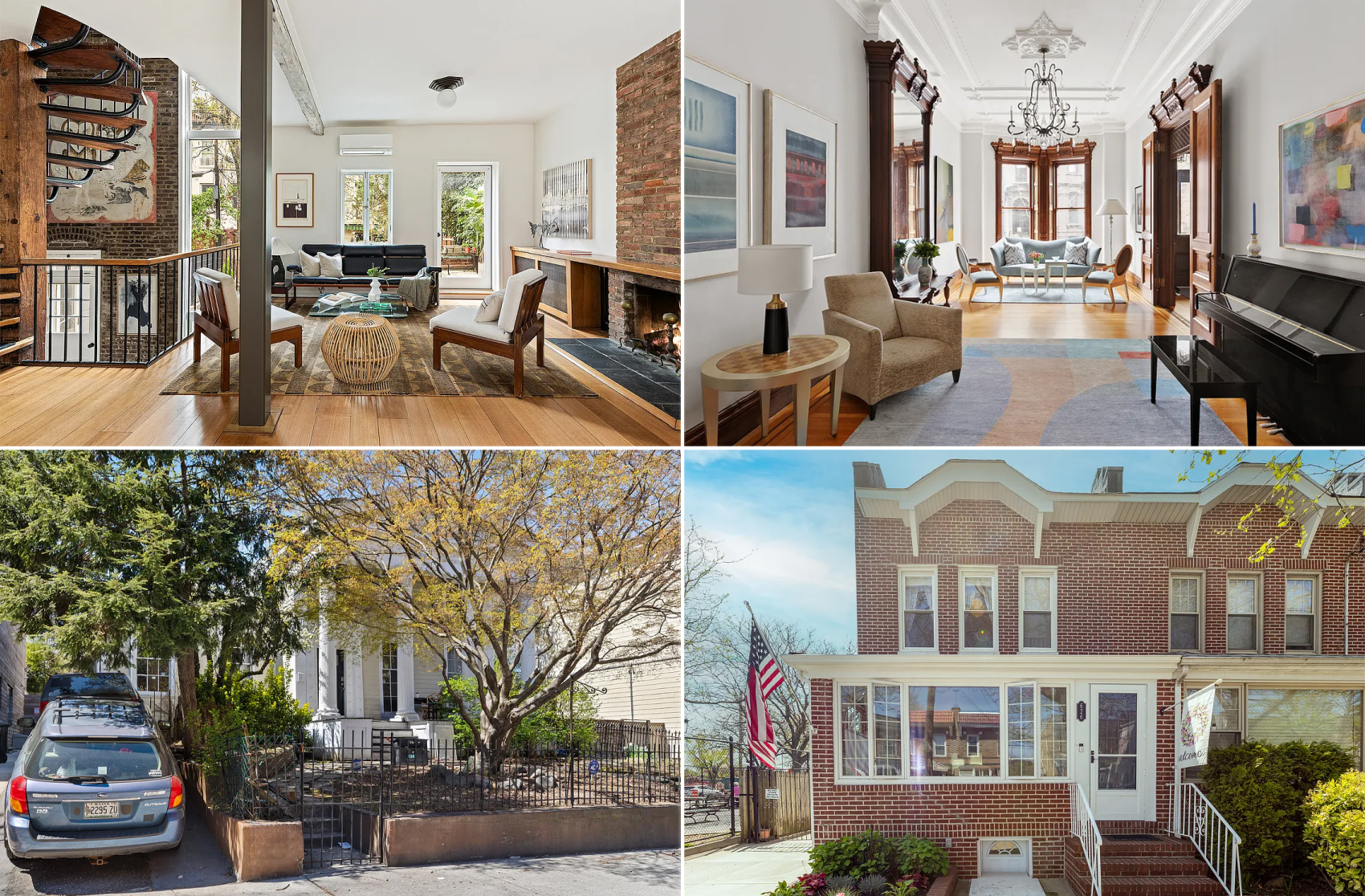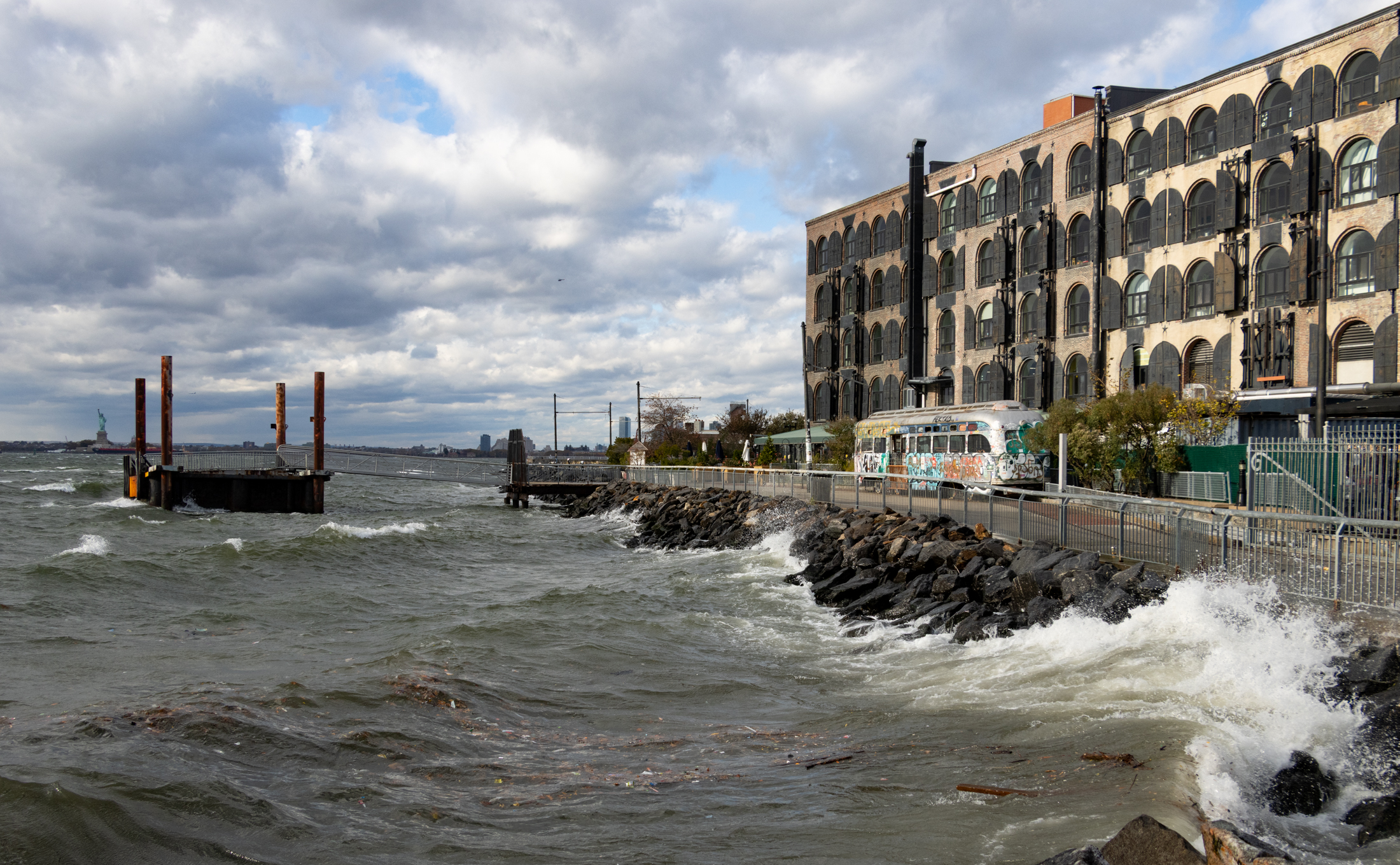The Lockwood Files: Not New York's First Housing Bubble
This is the first in a series of posts by Charles Lockwood, author of the brownstone bible Bricks and Brownstone and the “consummate authority” on New York City brownstone, according to The New Yorker. Tune in on Brownstoner every few weeks for a new installment. In the meantime, you can pick up a copy of…

This is the first in a series of posts by Charles Lockwood, author of the brownstone bible Bricks and Brownstone and the “consummate authority” on New York City brownstone, according to The New Yorker. Tune in on Brownstoner every few weeks for a new installment. In the meantime, you can pick up a copy of his must-have book here.
 Talk of a real estate bubble is so pervasive among New Yorkers—including Brooklyn brownstone owners—that you’d think this generation had invented soaring housing values…and was the first to face the risk of price reversals because of Wall Street gyrations or a national recession. Not true. Look back to nineteenth-century where high housing prices and whiplash-like boom-bust cycles were a regular occurrence in Brooklyn, Manhattan, and other cities. The litany of today’s housing woes—including the risks of real estate bubbles—sound remarkably like the problems of nineteenth-century New York.
Talk of a real estate bubble is so pervasive among New Yorkers—including Brooklyn brownstone owners—that you’d think this generation had invented soaring housing values…and was the first to face the risk of price reversals because of Wall Street gyrations or a national recession. Not true. Look back to nineteenth-century where high housing prices and whiplash-like boom-bust cycles were a regular occurrence in Brooklyn, Manhattan, and other cities. The litany of today’s housing woes—including the risks of real estate bubbles—sound remarkably like the problems of nineteenth-century New York.
Housing Shortage. As the city boomed after the 1825 completion of the Erie Canal, housing was so scarce—and construction workers were often so far behind schedule—that families sometimes moved into unfinished buildings. Well-dressed families are observed to be occupying houses of which the builders do not appear to have accomplished the work so far as to have fully closed them in by doors and windows, declared the Niles Weekly Register in 1825.
At least, those families had a roof over their heads. Some early nineteenth-century New Yorkers, who could not find temporary housing when their leases expired, sought short-term refuge in the city jails.
The transformation of Brooklyn from farms, forest, and a few villages into a rapidly growing city started in the 1820s when this shortage of housing in Manhattan—and the existence of regularly scheduled East River ferry service from the foot of Fulton Street in Manhattan to the foot of Fulton Street in Brooklyn—encouraged New Yorkers to buy lots and build homes on Clover Hill, a bluff overlooking the East River which became known as Brooklyn Heights.
High Prices. Year after year from the 1840s onward, New York newspapers complained that Manhattan was becoming a city of only the rich and the poor. The nineteenth-century brownstones in Brooklyn and Williamsburg, which are so coveted today, were originally built for middle class families who were priced out of Manhattan, and who often viewed Manhattan as overcrowded, dangerous, and full of undesirable immigrants.
New York landlords were just as unpopular in the nineteenth century as they are today. The landlords are ‘masters of the position’, and are careful to let their tenants know as much, complained the New York Herald in 1857. They took advantage of every opportunity to boost rents, particularly during the Civil War when many construction workers were fighting in the Army, not building needed housing.
Middle-class houses that had rented for $900 to $1,000 a year in 1860 fetched $1,200 to $1,500 a year by 1865, and the tenants, reported the New York Times on February 18, 1865, have to go a begging to get them for that. Those Civil War-era high prices drove more Manhattanites to more reasonably priced Brooklyn, where block after block of brownstones were built in the post-Civil War boom, particularly in Cobble Hill, Carroll Gardens, Boerum Hill, Fort Greene, Clinton Hill, the lower streets of Park Slope and Prospect Heights, and the innermost section of today’s Bedford Stuvyesant.
Real Estate Speculation. Today’s speculators, who buy brownstones and condominiums in expectation of even higher prices, are minor league players compared to their nineteenth-century New York brethren.
In the 1790s and afterwards, John Jacob Astor—New York’s first millionaire and founder of the Astor family fortune—was buying farmland several miles north of the city’s built-up area. In 1803, for example, he purchased a 70-acre farm between Broadway and the Hudson River in today’s West Forties—i.e., a large portion of today’s Times Square district.
Some speculators made their fortunes by selling off land to the gullible public, who hoped to make their own profits off risky purchases. During the 1850s boom—when built-up Brooklyn consisted of close-to-Manhattan neighborhoods like Brooklyn Heights, Cobble Hills, and the Fulton Street retail district, speculators were selling building lots in distant neighborhoods which lacked gas lighting, piped water, sewers, and paved streets, not to mention easy access to jobs in downtown Brooklyn or lower Manhattan.
Housing Busts. Every 20 years or so—in 1837, 1857, 1873, and 1893—a New York residential boom ended in a bust, and housing prices collapsed. Real estate speculation has become one of the bubbles of the day, wrote ex-New York Mayor Philip Hone in his diary during the mid-1830s boom. House lots, which had sold for $100 to $150 ten years earlier, rose to upwards of $2,000 by 1836 and 1837, according to British novelist Frederick Marryat, who visited New York as the [real estate] epidemic raged. In Brooklyn, where development did not extend much beyond today’s downtown and Brooklyn Heights, lots were marked out to an extent of fourteen miles, wrote Marryat, and these were eagerly speculated in.
In early 1837, several banks failed, the national economy fell into a depresson, New York real estate prices started declining, and construction dropped precipitously. The evil day has arrived which has been so truly predicted, lamented Philip Hone.
Lots in the West 100s (more than four miles from the outer edge of the city) which had cost $480 apiece in September 1836 were selling for $50 in April 1837. Lots in then-remote sections of Brooklyn like Fort Green or Boerum Hill experienced similar collapses in value. The immense fortunes which we heard so much about in the days of speculation, have melted away like the snow before an April sun, wrote Hone.
In 1873, a crisis on Wall Street triggered the Panic of 1873, a national depression which lasted until 1877, and caused declines in real estate values throughout Brooklyn, Manhattan, and the United States.
A glimpse of the Brooklyn Eagle real estate advertisements during the Panic of 1873 reveals the distress among homeowners, who were forced to sell their homes, and builders who had started construction projects before the crash, but had to sell during the slump.

The bottom ad reads…FOR SALE—HOUSE—AT A SACRIFICE for cash—The two-story and basement, high stoop brick house, 52 Second St., between Smith and Hoyt streets. Only those meaning business need apply. To such, a bargain will be offered.
One hard-pressed owner admitted in a March 27, 1876 advertisement that he needed a quick sale. FOR SALE—HAMILTON STREET—Splendid three-story, basement and cellar brick house; all modern improvements . . . must be sold at once. I want an offer. Great bargain.
The Conselyra & Co. real estate brokers at 679 DeKalb Avenue, near Nostrand Avenue, quite simply, offered a variety of properties at prices to suit the times, according to its March 27, 1876 advertisement.
Even owners of large brownstones in Brooklyn Heights and mansions on Clinton and Washington Avenues felt the pinch of the several-year-long depression. One March 27, 1876 Eagle advertisement offered the very grand 142 Montague Street—a first class four-story and basement brown stone, 25.6 x 56 x 100, frescoed throughout, and in perfect order—at a bargain and on easy terms, if applied for soon. Possession at once.
Today’s Wall Street volatility and the risk of spreading economic troubles must be giving Brooklyn and Manhattan brownstone owners some worries about their property values. Brooklyn brownstones—like Manhattan brownstones, coops, and condos—are some of the few markets in the U.S. not to experience a decline in values this year.
Today’s homeowners should also reflect upon the lessons of past real estate booms and busts. In nineteenth-century Brooklyn and Manhattan, residential mortgages acted as a brake (not accelerator) on real estate speculation, because they required substantial down payments. No zero down mortgages encouraged homebuyers or speculators to buy in ever-escalating nineteenth-century markets.
Significantly, most New York’s housing busts were caused by recessions (or panics) in the national economy in years like 1837, 1857, 1873, and 1893. Today, the reverse could prove true. A continued downturn in today’s U.S. housing markets (including still-resilient Brooklyn and Manhattan) could trigger a nationwide recession.
But there’s a silver lining to the real estate bubbles of the nineteenth century that can also be found today: The periodic bursting of earlier New York’s bubbles ruined many speculators, but they also pushed down residential prices and made housing more affordable for a time. The same thing could happen today.





So 2.35, we’re comparing a market that can reach a demand supply equilibrium (1800s real estate), which suffered a crash every ten years, to one where supply is constrained, and which therefore may not be able to reach equilibrium. The key here is “may”. The collapse in credit markets may lead to thousands of structured finance bankers being thrown into the gutters. Or they may move into commodities. Decreased availability of jumbo loans may affect the market for condos, or it may not (parents co-signing, alternative mortgage products). To stress, I’m not a housing bull, I’d just love to know whether the supply of new condos etc in recent years is roughly equivalent to the supply during the brownstone boom of the nineteenth century, and whether earlier crashes on Wall Street will accurately prefigure what might happen this time round. Two things that are different that I immediately notice – New York has a MUCH smaller manufacturing base (maybe a larger base of employment in newer industries like media), and back then there was not as much as an influx of wealth from older citizens, which has been a major force in propping up valuations, and might not be as vulnerable to a downturn. Still, I’m speculating wildly here.
I personally do not believe ANY of these houses on ANY block are worth the dollars that buyers have spent for them over the past two or so years. The difference, between what is desirable and what is not, was already built into pre-boom prices. No?
“the majority of ARMS issued in 2005 are resetting next spring”
really? I got an ARM in 2005 and it’s fixed until 2012 at which point it can go up one point a year for three years. In 2015 my rate will be 7.25% (yes, it’s 4.25 now).
can’t really imagine that the MAJORITY got 3 year ARMS? 5/7 are standard
“doesn’t the real estate market in NY now depend on the expense and difficulty of adding to the city’s housing stock, a situation that did not exist during the city’s sprawl into Brooklyn and uptown Manhattan?”
That makes bubbles and crashes more likely. In places with more land constraints, increased demand is met by increased supply, limiting price gains. Here the price soars until people can’t pay it anymore, credit turns, and the price crashes. The busts will take place in places with bubbles.
The problem is when people need to relocate or cash out and their houses will not sell for enough to cover the mortgage. This can happen to good people. The banks could agree to cram down, but your credit will be ruined.
I personally do not believe many of these houses in the less desirable blocks are worth the dollars that buyers have spent for them over the past two or so years. There will always be a demand in the better areas but the fringes will get a scrubbing I think.
I’m with 11:21. The last bust stayed down for 5 to 8 years (see graph, http://tinyurl.com/mythk ). You’re not guaranteed to “out-own” a divorce or relocation within that time frame. Better to take that risk closer to the rebound. There’s a growing condo-to-rental conversion trend among developers. If this continues before prices drop, rents could actually drop.
Sterling credit or not…big down payment or not…anything over the jumbo mark (like 90% of the condos currently on the market, at least in Brooklyn), you will be screwed.
Folks are getting kicked in the gut as they near closing the % rate gets knocked up OR they are having to bite off a much monthly payment than originally expected and make a major life style change.
Building boom combined with what is going on with the mortgage market is becoming/has become a disaster for would be home buyers. All the discussion of renting vs. buying now may have some serious validity.
Thank-G I bought in 2004.
I am no Wall street finance wizard but someone please correct me if I’m wrong (I’m sure you all will do that without my prompting but…) If no one buys a home because it costs to much to buy or they don’t have a down payment to buy or sterling credit, they have to rent from people who own. Won’t this create a higher demand for rentals and fewer rentals on the market creating higher prices for rentals? I remember decent apartments being really hard to find in 1986-1991.
11.21, Mr Lockwood was looking at what the 19th century building boom in Brooklyn might teach us now. The comparison is thus to an era considerably earlier than 40 years ago. One can get a taste of the pace of the 19th century building boom from a cursory walk through the northwestern part of the Borough. I don’t know whether the early and middle part of the last century continued in this vein, and whether improvements in mass transit and the development in the city’s industry allowed locations further out to exhibit the same characteristics. I eagerly anticipate a further post from Mr. Lockwood on the subject.
But you’re right, I will have to see how my purchase pans out. My horizons, fortunately, are a little different – I’m paying a decent chunk of cash, intend to hold until I sire an adequate brood and usher them through 321, and am buying now because I can’t be arsed to deal with a landlord any more.
Your unwillingness to allow for the considerable distortions of the city’s housing market is a little disappointing, though.